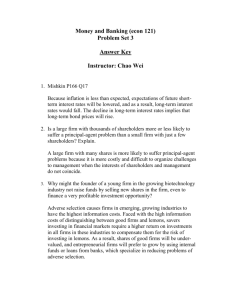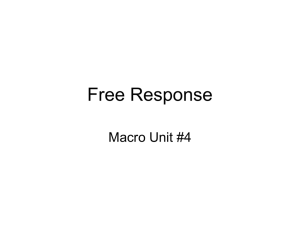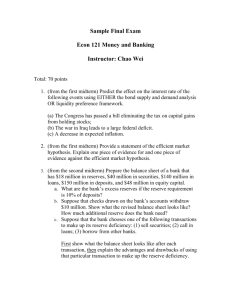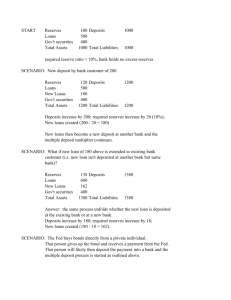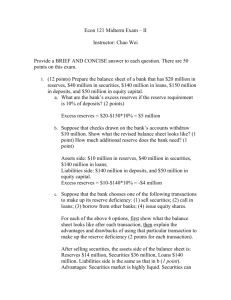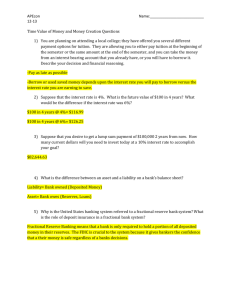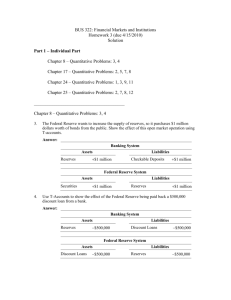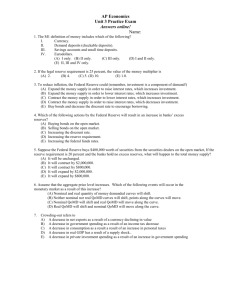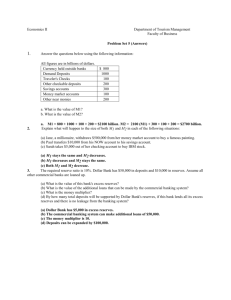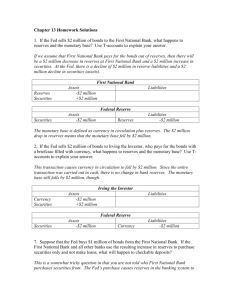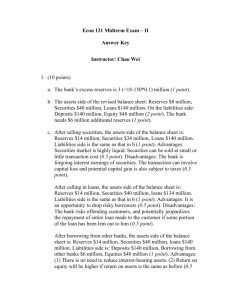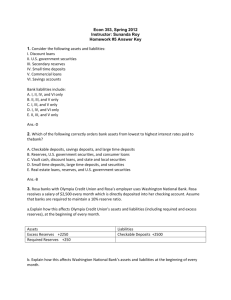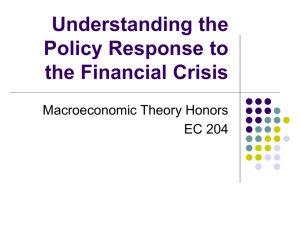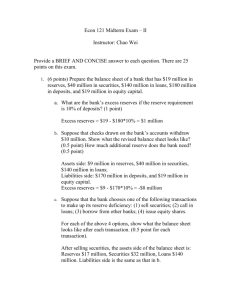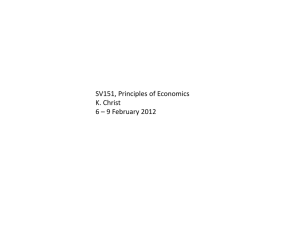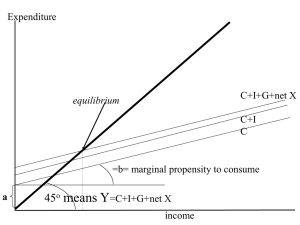Money and Banking (econ 121)
advertisement
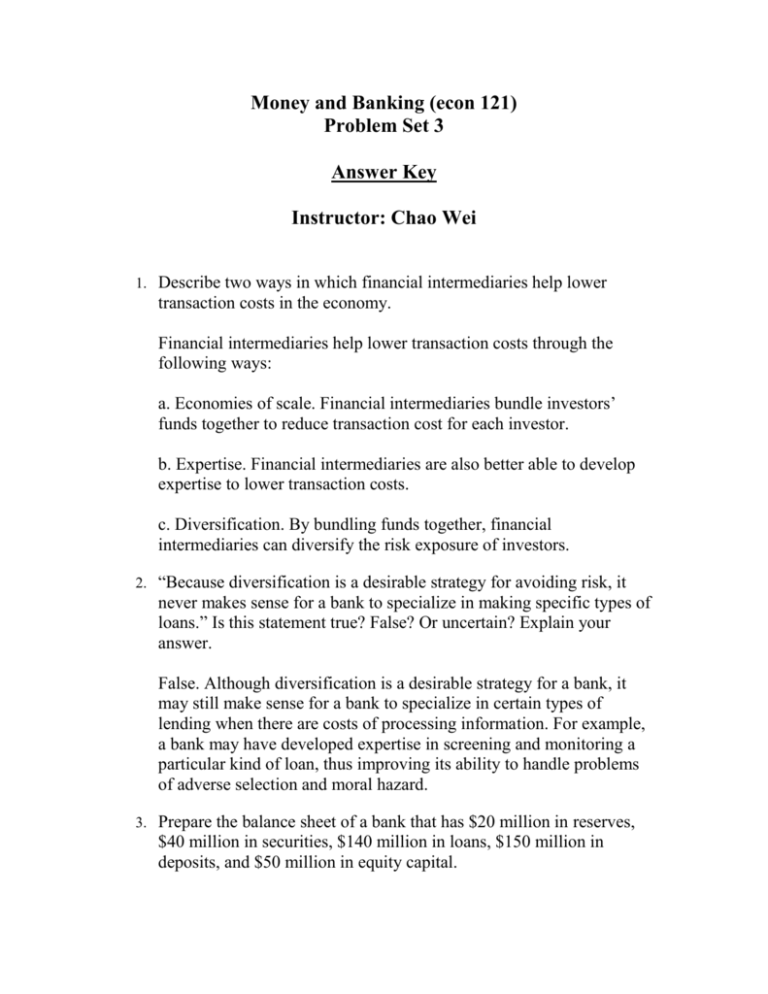
Money and Banking (econ 121) Problem Set 3 Answer Key Instructor: Chao Wei 1. Describe two ways in which financial intermediaries help lower transaction costs in the economy. Financial intermediaries help lower transaction costs through the following ways: a. Economies of scale. Financial intermediaries bundle investors’ funds together to reduce transaction cost for each investor. b. Expertise. Financial intermediaries are also better able to develop expertise to lower transaction costs. c. Diversification. By bundling funds together, financial intermediaries can diversify the risk exposure of investors. 2. “Because diversification is a desirable strategy for avoiding risk, it never makes sense for a bank to specialize in making specific types of loans.” Is this statement true? False? Or uncertain? Explain your answer. False. Although diversification is a desirable strategy for a bank, it may still make sense for a bank to specialize in certain types of lending when there are costs of processing information. For example, a bank may have developed expertise in screening and monitoring a particular kind of loan, thus improving its ability to handle problems of adverse selection and moral hazard. 3. Prepare the balance sheet of a bank that has $20 million in reserves, $40 million in securities, $140 million in loans, $150 million in deposits, and $50 million in equity capital. What are the bank’s excess reserves if the reserve requirement is 10% of deposits? a. Excess Reserves = 20 – 0.1*150 = 5 million. b. Suppose that checks drawn on the bank’s accounts withdraw $10 million. Show what the revised balance sheet looks like. What are the bank’s excess reserves? Assets side: reserves $10 million, securities $40 million, loans $140 million; Liabilities side: deposits $140 million, capital $50 million. Excess Reserves = 10 – 0.1*140 = -$4 million. As a result, the bank needs to raise its reserves by $4 million to satisfy the reserve requirement. c. Suppose that the bank borrows half of its reserve deficiency from other banks and sell securities to make up the other half of its reserve deficiency. Now what does its balance sheet look like? Assets side: reserves $14 million, securities $38 million, loans $140 million; Liabilities side: deposits $140 million, borrowing from other banks $2 million, capital $50 million. d. Asset side: Reserves 14m, Securities 40m, Loans 140m; Liabilities side: Deposits 140m, bank capital(or equity, net worth) 54m. 4. Suppose that you are the manager of a bank that has $15 million of fixed-rate assets, $30 million of rate-sensitive assets, $25 million of fixed-rate liabilities, and $20 million of rate-sensitive liabilities. Conduct a gap analysis for the bank, and show what will happen to bank profits if interest rates rise by 5 percentage points. GAP = $30 m - $20 m = $10 m change in profits = 5%*(30-20) = $0.5 m

